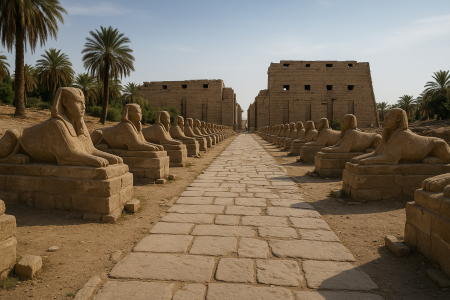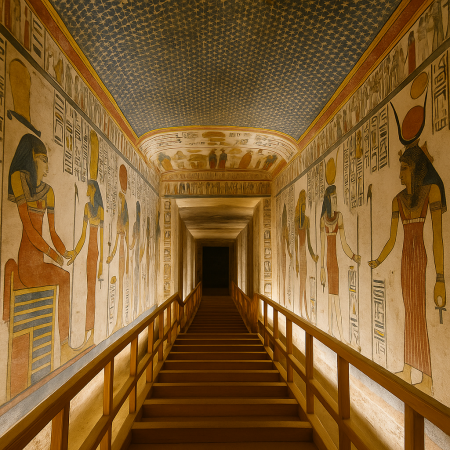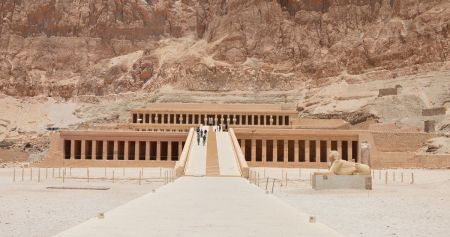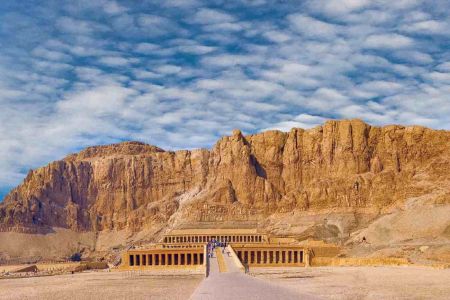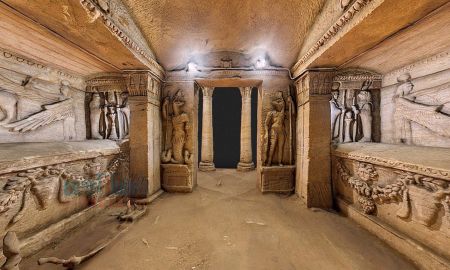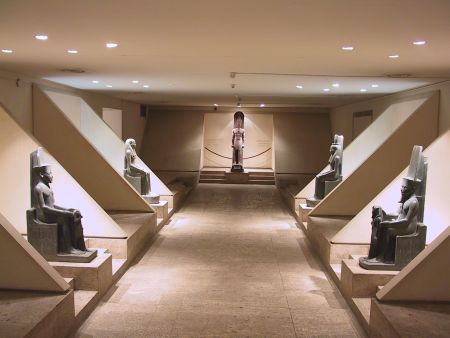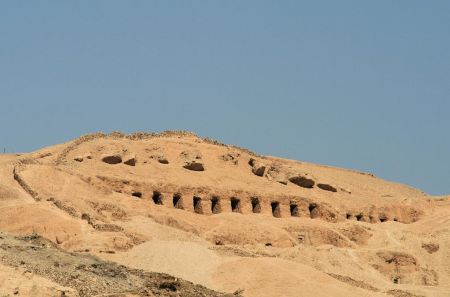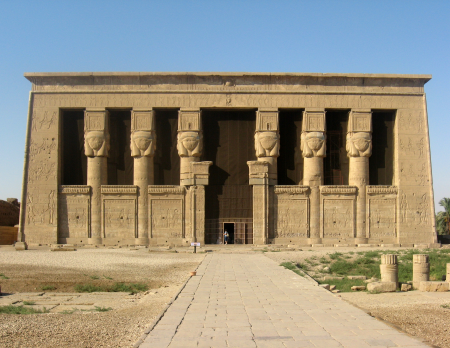Habu Temple : Egypt’s Pharaonic Power and Artistry
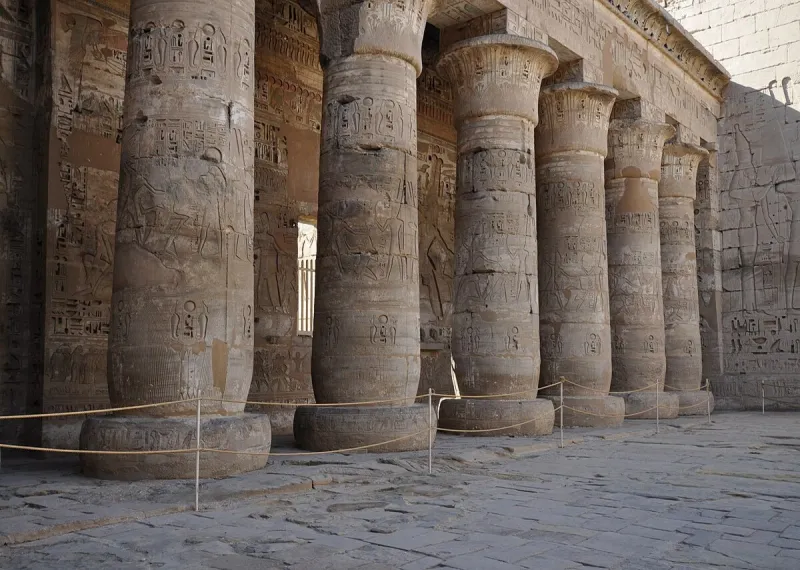
Introduction: The Majestic Temple of Medinet Habu in Luxor
Tucked away on the west bank of the Nile in Luxor lies one of Egypt’s most stunning and often overlooked temples—Habu Temple, also known as the Temple of Medinet Habu. This massive mortuary temple was built by Pharaoh Ramesses III of the 20th Dynasty and stands as a powerful symbol of military might, divine kingship, and exquisite New Kingdom architecture.
Constructed during Egypt’s twilight of empire, the Temple of Habu offers a window into the pharaoh's battle against chaos, especially the notorious Sea Peoples. Yet what truly sets it apart is its well-preserved hieroglyphs, colorful wall carvings, and colossal pylons that still whisper stories of glory, ritual, and ancient resilience. Unlike the more famous Karnak or Luxor Temples, Habu offers a quiet, almost sacred experience—uncluttered by crowds but rich in history.
With its towering reliefs depicting battle scenes, ceremonial processions, and religious iconography, Medinet Habu Temple is both a military archive and a spiritual monument. It's a must-visit for anyone seeking a deeper, less commercialized dive into ancient Egyptian history and art.
The Historical Significance of Habu Temple
Built to Honor Ramesses III
The temple was constructed during the reign of Ramesses III (c. 1186–1155 BCE), the last great warrior pharaoh of the New Kingdom. Designed as his mortuary temple, it was intended for funerary rituals and to immortalize his divine legacy.
A Record of Victory Against the Sea Peoples
One of Habu’s most famous features is its detailed depiction of Ramesses III’s battles against the Sea Peoples, a mysterious group of raiders who threatened Egypt during the Bronze Age Collapse. These battle reliefs are some of the most vivid and historically valuable military scenes in ancient Egyptian art.
A Last Glimpse of Egyptian Grandeur
Constructed during a time of growing instability, Temple of Medinet Habu marked the end of Egypt’s imperial strength. Yet, it encapsulates one of the final expressions of monumental temple construction before the New Kingdom's decline.
Architectural Brilliance and Layout of the Temple
Fortified Walls and Towering Pylons
The Habu Temple complex is enclosed by massive mudbrick walls, giving it the appearance of a fortified fortress. Its imposing first pylon—decorated with larger-than-life figures of the king smiting enemies—sets the tone for what lies inside: a blend of divine worship and royal propaganda.
Hypostyle Halls and Sanctuaries
Once inside, visitors encounter two hypostyle halls, both filled with columns adorned with lotus capitals and vibrant inscriptions. Deeper within lie the sanctuaries dedicated to Amun-Ra, Mut, and Khonsu, where rituals were performed to nourish the spirit of the deceased pharaoh.
Royal Palace and Administrative Area
Unlike other mortuary temples, Medinet Habu features a royal palace attached to the temple structure itself. This allowed Ramesses III to oversee rituals during his lifetime, making the temple both a spiritual and administrative center.
Art, Symbolism, and Wall Reliefs
Preserved Colors and Detail
What sets Habu Temple apart is the exceptional preservation of its reliefs and color pigments. Many wall carvings still boast their original blues, reds, and golds, making them among the most visually striking in Egypt.
Religious and Political Themes
Reliefs within the temple mix religious rituals, festival scenes, and violent military exploits. The narrative shifts from divine offerings to scenes of gruesome battle, where dismembered enemies are counted in piles—part of Ramesses III’s claim to dominance and divine favor.
Artistic Mastery
The level of detail in the carvings is astounding. You’ll find carvings of gods and goddesses, sacred boats, processions, and scenes of cosmic order, all contributing to the pharaoh’s role as the universe’s divine stabilizer.
Visiting Medinet Habu: A Hidden Treasure in Luxor
How to Get There
Located about 6 kilometers west of Luxor, the Temple of Medinet Habu is accessible via car, taxi, or as part of a guided West Bank tour that includes Valley of the Kings, Deir el-Medina, and Ramesseum.
What to Expect
Unlike Egypt’s more crowded monuments, Habu Temple offers a tranquil experience. You’ll be able to explore towering pylons, colonnaded courtyards, and richly carved chambers in relative peace, making it ideal for in-depth photography and spiritual reflection.
Best Time to Visit
The best time to visit is between October and April, when temperatures are mild. Early morning visits offer the best light for photographs and a quiet atmosphere for immersive exploration.
Cultural and Archaeological Importance
A Treasure for Egyptologists
For archaeologists and historians, Medinet Habu is a goldmine. Its detailed inscriptions provide vital insight into the politics, military tactics, and religious practices of the late New Kingdom.
Restorations and Conservation Efforts
Thanks to the Oriental Institute of the University of Chicago, ongoing restoration and documentation have preserved the temple’s reliefs and ensured its survival for future generations.
Role in Local Egyptian Culture
Locally, Habu Temple remains a source of pride. It is often featured in Egyptian textbooks, documentaries, and historical tours as a prime example of late-period royal ambition and temple design.
Nearby Attractions on Luxor’s West Bank
Valley of the Kings
Just a short drive from Medinet Habu lies the Valley of the Kings, home to the tombs of legendary pharaohs like Tutankhamun and Seti I.
Ramesseum
The mortuary temple of Ramesses II, known as the Ramesseum, is another nearby marvel, famous for its fallen colossus and inscriptions celebrating the Battle of Kadesh.
Deir el-Medina
The village of the workers who built the royal tombs offers a human perspective on ancient life and artistry.
Frequently Asked Questions About Habu Temple
What is Habu Temple famous for?
Habu Temple is renowned for its incredible state of preservation, colorful wall reliefs, and its detailed depictions of Ramesses III’s battles against the Sea Peoples.
Who built Medinet Habu?
The temple was built by Pharaoh Ramesses III, one of the last powerful rulers of the New Kingdom, around the 12th century BCE.
Is Habu Temple worth visiting?
Absolutely. It is one of Luxor’s best-preserved and least crowded temples, offering a rich and authentic experience without the overwhelming crowds of Karnak or Luxor Temple.
How long should I spend at Habu Temple?
A thorough visit typically takes 1 to 2 hours, allowing time to admire the architecture, reliefs, and the peaceful environment.
Are guides available at Medinet Habu?
Yes, local guides are available at the entrance or can be booked in advance. Hiring a knowledgeable guide enhances the experience, especially when interpreting the reliefs and inscriptions.
Final Thoughts: Habu Temple, Egypt’s Timeless Masterpiece
The Temple of Medinet Habu is one of Egypt’s most underrated yet profoundly powerful ancient sites. With its vivid reliefs, epic narratives, and architectural grandeur, it offers an intimate and vivid encounter with Egypt’s rich past. For travelers, historians, and seekers of beauty alike, Habu Temple stands as a testament to a great pharaoh, a fading empire, and the enduring splendor of ancient Egyptian civilization.


